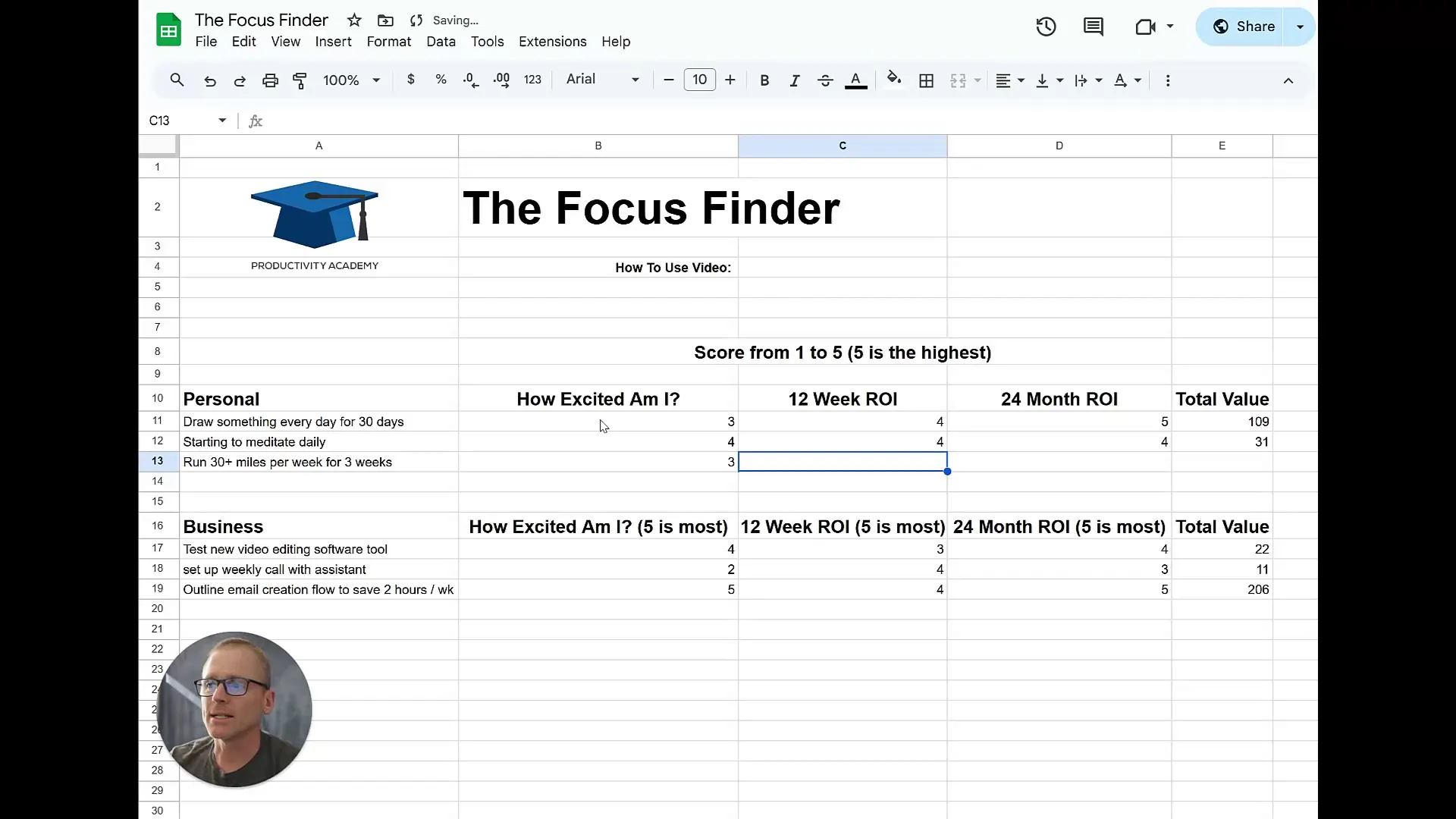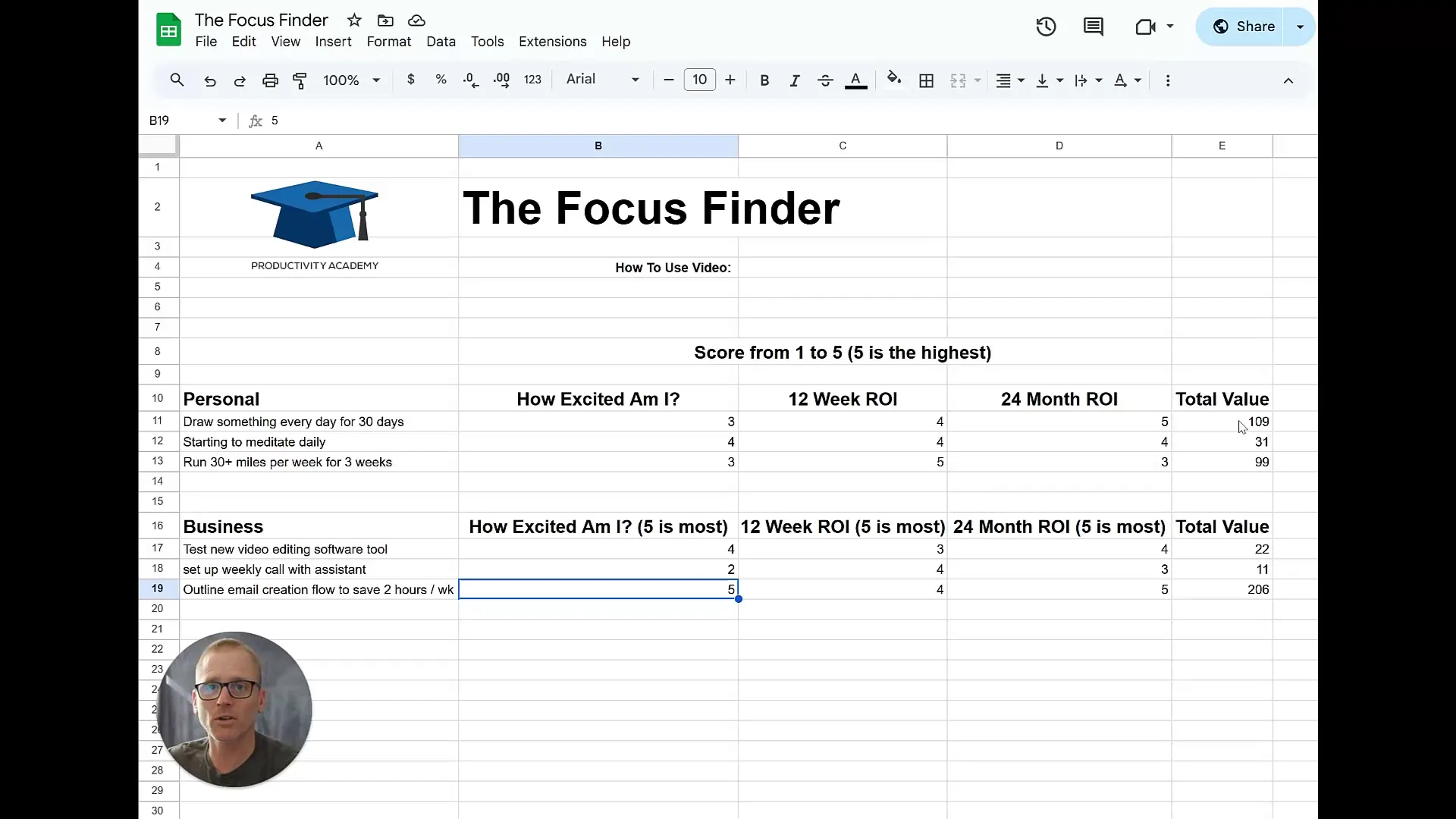How to Use the Focus Finder to Cut Through Overwhelm and Prioritize What Matters
If you’re anything like me, there are times when your brain feels stuffed with projects, ideas, and to-dos. Maybe you’re juggling personal goals, work tasks, or side projects, and it all starts to feel like a big jumble. Planning can help, but figuring out what to actually focus on? That’s the tricky part.
That’s where the Focus Finder comes in—a simple, practical tool I use to clear the mental clutter and pinpoint what deserves my attention right now. It’s quick to set up and surprisingly effective whether you’re doing quarterly planning or just trying to get a grip when things feel overwhelming.
Why Use the Focus Finder?
When you try to do everything at once, chances are the most important stuff gets shortchanged. The Focus Finder helps you avoid that by making your priorities visible and measurable. Instead of bouncing around between tasks or projects, you assign each one a score based on how it fits with what matters to you.
It’s not about rigid rules or some magic formula. It’s about helping you think through your options, get them out of your head, and see clearly what feels right to focus on.
How the Focus Finder Works
At its core, the Focus Finder is a simple Google Docs spreadsheet where you list projects or goals you’re considering. These can be personal, business-related, or anything else on your plate. You can customize the list however you want—delete what doesn’t apply, add what does, and keep the core structure intact.
Here’s the gist:
- List your projects or goals. For example, “Draw something every day for 30 days,” “Start meditating daily,” or “Run 30+ miles per week for three weeks.”
- Score each one on a scale of 1 to 5 based on a few key questions:
- How excited are you about this? (Your enthusiasm matters.)
- What’s the short-term ROI (Return on Investment)? (Think benefits you’ll see in a few weeks or months – and it’s not always about money)
- What’s the long-term ROI? (Look out over months or years—how will this pay off down the road?)
These scores are subjective, so it’s about your honest gut feeling. The spreadsheet then uses a formula that weights these scores exponentially, meaning a 5 counts significantly more than a 3. This helps quickly highlight what really stands out.

Customizing Time Frames for ROI
The tool defaults to 12 weeks for short term and 24 months for long term, but you can tweak these time frames to fit your context. Maybe you want to think in terms of one week and six months, or three months and five years. The key is to have a near-term and a longer horizon to evaluate your projects.
What This Looks Like in Practice
Let me walk you through a quick example I use:
- Draw something every day for 30 days: Excitement might be moderate, and the ROI varies.
- Run 30 miles per week for three weeks: Excited? Maybe a 3. Short-term ROI might be high if you’re focused on health, so a 5. Long-term, if it’s only for three weeks, maybe a 3.
- Start meditating daily: Maybe less exciting right now, with lower scores.
Once you fill in the scores, the spreadsheet calculates a total value that helps you see the relative importance of each. In this example, “Draw something every day” might score highest, followed closely by “Run 30 miles,” and “Meditate daily” trailing behind.
This doesn’t mean you’re locked into doing things in that exact order, but it shines a light on what’s really moving the needle.
Digging Deeper: Beyond the Basics
You can add any kind of project or task. For example:
- Testing new video editing software (exciting and potentially useful)
- Setting up a weekly call with an assistant (less exciting, but maybe some short-term benefits)
- Outlining an email creation flow that could save you two hours a week (very exciting and high ROI both short and long term)
By scoring these honestly, you might discover that the email workflow beats out the weekly call in terms of value, even if both seem important at first glance.

How to Get Started with Your Own Focus Finder
Here’s a simple way to try this out yourself:
- Take 5–10 minutes to list everything you’ve been thinking about or wanting to do.
- Score each item honestly on excitement, short-term ROI, and long-term ROI.
- Look at the total scores and see what jumps out.
- Use this as a guide to decide what to focus on next.
It’s not about perfection or rigid planning. It’s about getting clarity and cutting through the noise.
One thing I’ve found helpful is revisiting the scores every so often. Your excitement or the ROI might shift as circumstances change, and that’s okay. The tool is flexible enough to grow with you.
Final Thoughts
The Focus Finder works because it forces you to put some numbers to your feelings and goals, which helps you see what really matters instead of just juggling everything at once.
It’s like journaling with a GPS—helping you navigate your priorities and avoid the “too much going on” trap.
If you ever feel overwhelmed or stuck, give it a shot. You might be surprised how quickly it helps you zero in on what’s worth your time and energy right now.






